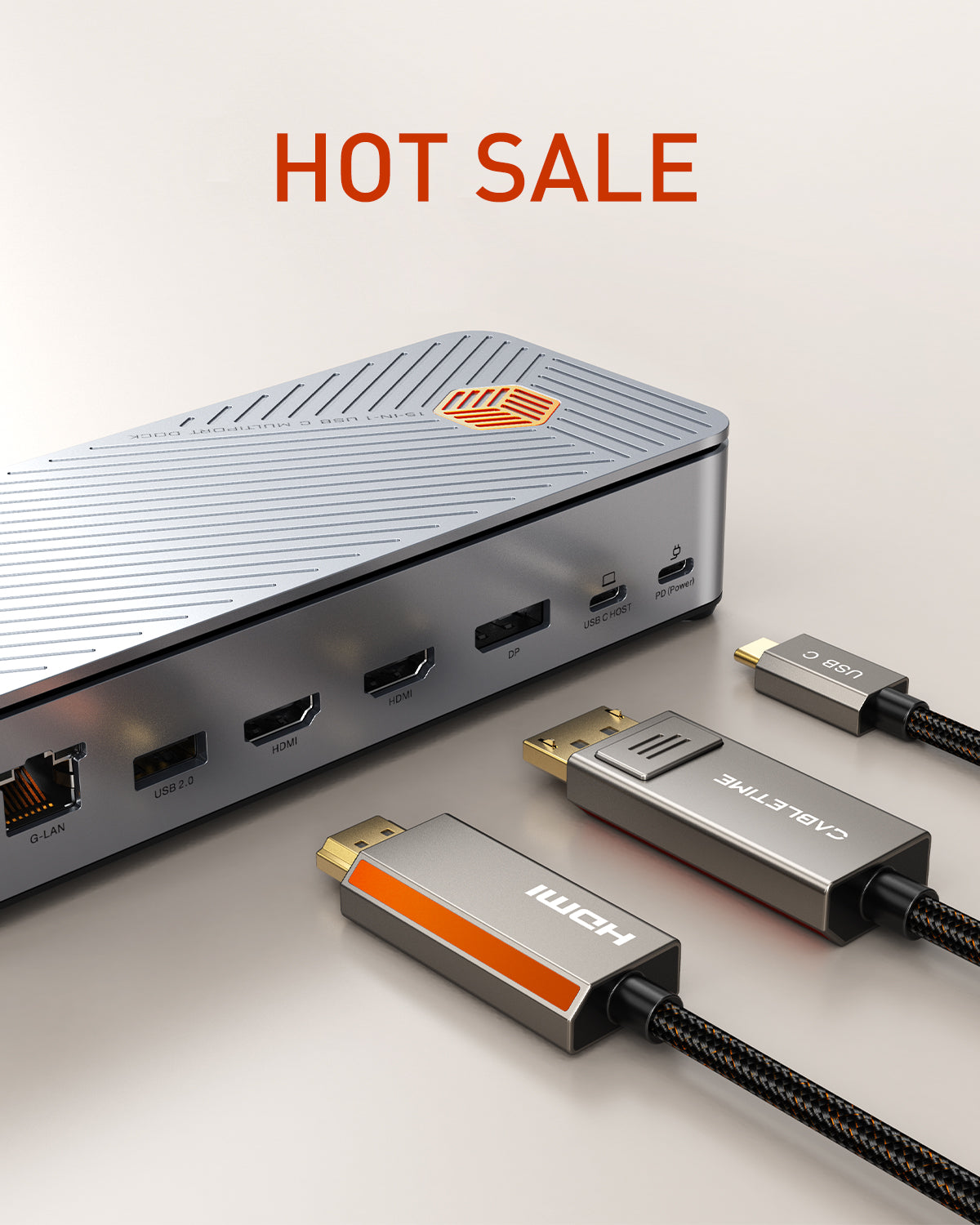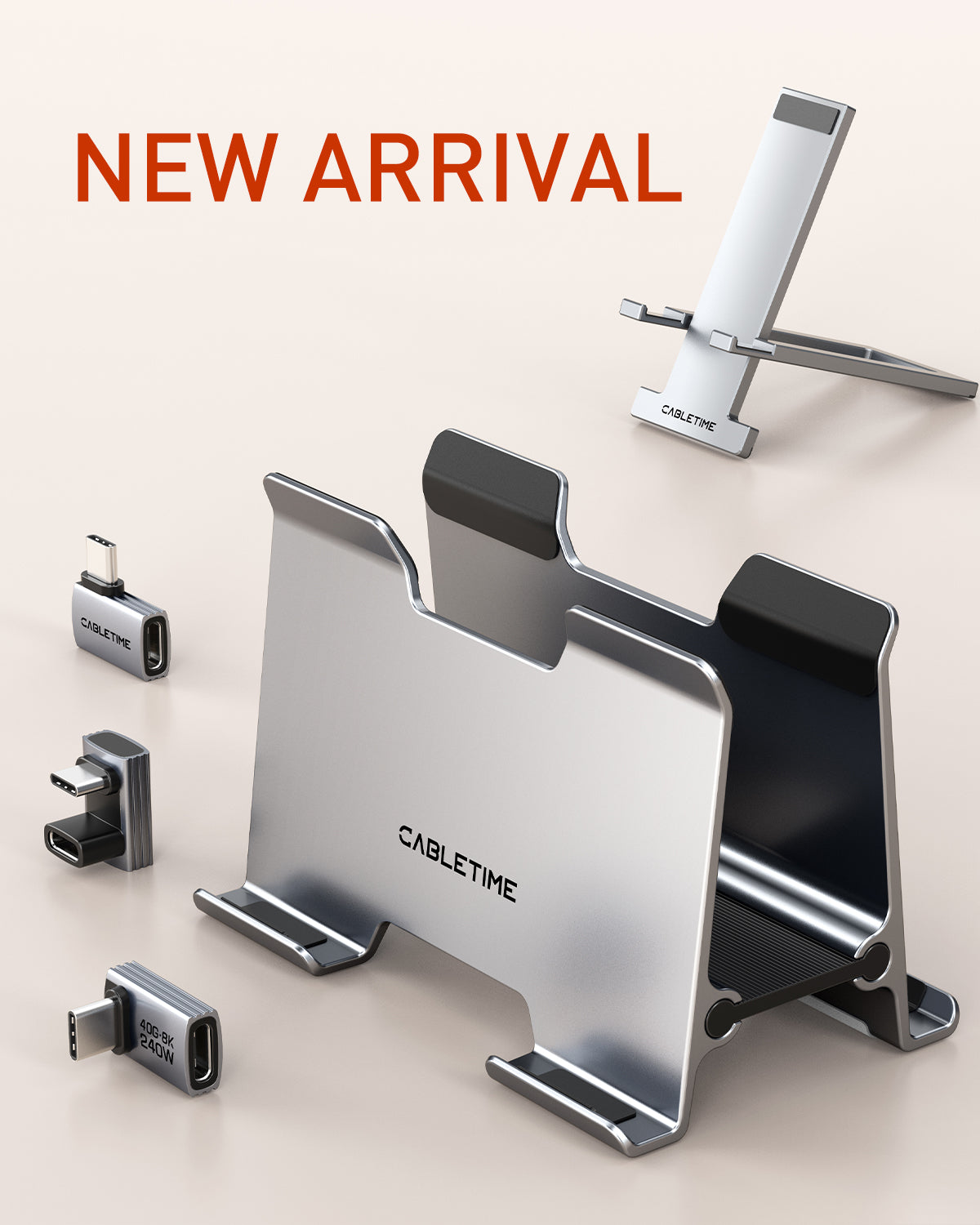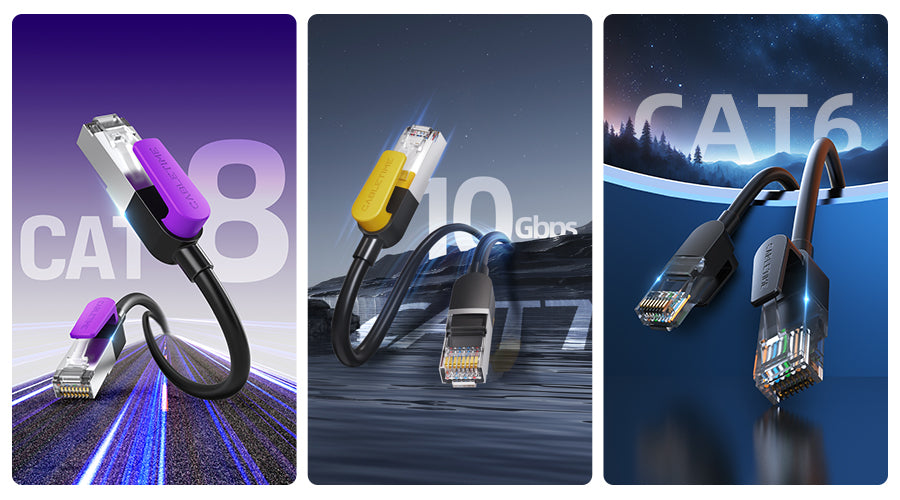DisplayPort (DP) is a digital display interface standard that can transmit high-quality video and audio signals. It is widely used in various devices, such as monitors, laptops, tablets, and smartphones. However, not all devices have a dedicated DP port, which limits the connectivity and compatibility of DP-enabled devices. This is where DP Alt Mode comes in.
DP Alt Mode is a feature that allows devices to use the USB Type-C port to deliver DP signals. This means that devices can use a single USB Type-C cable to connect to a DP monitor or other devices without needing adapters or converters. DP Alt Mode also enables devices to support multiple displays and high-resolution video output, enhancing the user's device usage experience.
In this article, we will explain the concept, functionality, and impact of DP Alt Mode. We will also compare it with other modes, such as HDMI Alt Mode, MHL, and Thunderbolt, and discuss its advantages and limitations. Finally, we will provide some future outlooks and user guides for DP Alt Mode.
Table of content

Definition and Functionality of DP Alt Mode
Basic Definition
DP Alt Mode is a mode of operation that allows devices to use the USB Type-C port to transmit DP signals. It is based on the USB Power Delivery (PD) specification, which defines how devices can negotiate and switch between different modes of operation over the USB Type-C interface.
DP Alt Mode is one of the several alternate modes that are supported by USB Type-C, such as HDMI Alt Mode, MHL, and Thunderbolt. These alternate modes allow devices to use the USB Type-C port for purposes other than USB data transfer, such as video, audio, or power delivery.
DP Alt Mode is compatible with the standard DP interface, which means that devices that support DP Alt Mode can connect to any DP-enabled device, such as monitors, projectors, docking stations, etc. DP Alt Mode also supports the DP features, such as Adaptive Sync, HDR, and Multi-Stream Transport (MST).

Technical Working Principle
DP Alt Mode works by using some of the pins of the USB Type-C connector to carry DP signals instead of USB data signals. The USB Type-C connector has 24 pins, of which four are used for USB data transfer (two pairs of differential signals called SuperSpeed lanes). The remaining pins are used for power delivery, configuration, and alternate modes.
DP Alt Mode uses four pins (two pairs of differential signals, called DisplayPort lanes) to carry DP signals. The DP lanes can operate at different speeds, depending on the DP version and the cable quality.
The DP lanes can be configured in different ways, depending on the number of displays and the resolution of each display.
The DP Alt Mode is negotiated and activated using the USB PD protocol, allowing devices to communicate and exchange information over the USB Type-C interface. The USB PD protocol uses two pins (called CC1 and CC2) to send and receive messages between devices. The messages include the device's capabilities, the requested mode of operation, and the confirmation of the mode switch.

DP Alt Mode switch process
The DP Alt Mode switch process involves the following steps:
- The source device (such as a laptop) sends a message to the sink device (such as a monitor) to indicate its DP Alt Mode capability and the available DP lanes.
- The sink device responds with a message to acknowledge the DP Alt Mode capability and the preferred DP configuration.
- The source device confirms the DP configuration and sends a message to request the DP Alt Mode switch.
- The sink device accepts the DP Alt Mode switch and sends a message to confirm the mode change.
- The source device and the sink device switch to the DP Alt Mode and start transmitting DP signals over the USB Type-C interface.
Practical Applications of DP Alt Mode
Integration with USB Type-C
USB Type-C is a versatile and reversible connector that can support various functions, such as USB data transfer, power delivery, and alternate modes. USB Type-C is becoming the standard interface for many appliances, such as laptops, tablets, smartphones, etc.
DP Alt Mode is integrated with USB Type-C, which means that devices can use the same USB Type-C port and cable to deliver DP signals, along with other functions. This simplifies the connectivity and compatibility of devices, as users do not need to use different ports or cables for different purposes.

DP Alt Mode also benefits from USB Type-C features, such as the reversible plug orientation, high-speed data transfer, and power delivery.
Device Compatibility
DP Alt Mode is compatible with a wide range of devices that support the standard DP interface, such as monitors, projectors, docking stations, etc. DP Alt Mode can also support multiple displays by using the MST feature of DP. This allows devices to daisy-chain or split the DP signal to connect to multiple displays using a single USB Type-C port and cable.
However, not all devices that have a USB Type-C port support DP Alt Mode, as it depends on the device’s chipset and firmware. Therefore, users need to check the device’s specifications or contact the manufacturer to confirm the DP Alt Mode support. Some devices may also require a driver update or a firmware update to enable DP Alt Mode.
Video Output Capability
DP Alt Mode can support high-resolution and high-refresh-rate video output, depending on the DP version, the cable quality, and the device's capability.
However, not all devices supporting DP Alt Mode can achieve the maximum video output capability, depending on the device's chipset and firmware. Therefore, users need to check the device's specifications or contact the manufacturer to confirm the video output capability. Some devices may also require a driver or firmware update to enable maximum video.
Comparison of DP Alt Mode with Other Modes
Comparison with HDMI Alt Mode
HDMI Alt Mode is another alternate mode that allows devices to use the USB Type-C port to transmit HDMI signals. HDMI is another digital display interface standard that can transmit high-quality video and audio signals. It is also widely used in various devices, such as monitors, TVs, laptops, tablets, etc.
The main differences between DP Alt Mode and HDMI Alt Mode are:
- DP Alt Mode is based on the DP standard, while HDMIAlt Mode is based on the HDMI standard. This means that devices that support DP Alt Mode can connect to any DP-enabled device, while devices that support HDMI Alt Mode can connect to any HDMI-enabled device. However, devices that support both modes can use adapters or converters to connect to either type of device.
- DP Alt Mode can support higher resolution and refresh rate than HDMI Alt Mode, depending on the DP version and the cable qualityDP Alt Mode can support MST, which allows devices to connect to multiple displays using a single USB Type-C port and cable. HDMI Alt Mode does not support MST, which means that devices can only connect to one display using a single USB Type-C port and cable.
- DP Alt Mode can support Adaptive Sync, which allows devices to synchronize the refresh rate of the show with the frame rate of the content, resulting in smoother and tear-free video playback. HDMI Alt Mode does not support Adaptive Sync, which means that devices may experience stuttering or tearing in video playback.
Comparison with MHL and Thunderbolt
MHL and Thunderbolt are two other modes that allow devices to use the USB Type-C port to transmit video and audio signals. MHL is a mobile device interface standard that can transmit high-quality video and audio signals from smartphones and tablets to TVs and monitors. Thunderbolt is a high-speed interface standard that can transmit data, video, and power signals over a single cable.
The main differences between DP Alt Mode and MHL and Thunderbolt are:
- DP Alt Mode and MHL are based on the USB PD specification, which means that they use the USB PD protocol to negotiate and switch modes over the USB Type-C interface. Thunderbolt is based on the Intel Thunderbolt specification, which means that it uses a different protocol to negotiate and switch modes over the USB Type-C interface.
- DP Alt Mode and Thunderbolt can support higher resolution and refresh rate than MHL, depending on the DP version, the cable quality, and the device's capability. For example, DP 1.4 can support up to 8K resolution at 60 Hz or 4K resolution at 120 Hz, while Thunderbolt 3 can support up to 5K resolution at 60 Hz or 4K resolution at 120 Hz. MHL 3.0 can support up to 4K resolution at 30 Hz or 1080p resolution at 60 Hz.
- DP Alt Mode and Thunderbolt can support MST, allowing devices to connect to multiple displays using a USB Type-C port and cable. MHL does not support MST, which means that devices can only connect to one display using a single USB Type-C port and cable.
- DP Alt Mode and Thunderbolt can support Adaptive Sync, which allows devices to synchronize the display's refresh rate with the content's frame rate, resulting in smoother and tear-free video playback. MHL does not support adaptive sync, which means that devices may experience stuttering or tearing during video playback.
- DP Alt Mode and MHL can support power delivery, which allows devices to charge or power other devices using the USB Type-C port and cable. Thunderbolt can also support power delivery, but only up to 15 W, which may not be sufficient for some devices.

|
Mode |
Resolution |
Refresh Rate |
MST |
Adaptive Sync |
Power Delivery |
|
DP Alt Mode |
Up to 8K |
Up to 120 Hz |
Yes |
Yes |
Yes |
|
HDMI Alt Mode |
Up to 4K |
Up to 60 Hz |
No |
No |
Yes |
|
MHL |
Up to 4K |
Up to 30 Hz |
No |
No |
Yes |
|
Thunderbolt |
Up to 5K |
Up to 60 Hz |
Yes |
Yes |
Up to 15 W |
Technical Advantages and Limitations of DP Alt Mode
Advantages
DP Alt Mode has several technical advantages that make it a superior mode for video transmission over the USB Type-C interface. Some of the advantages are:
- DP Alt Mode can support high-resolution and high-refresh rate video output, which can provide a better visual quality and user experience for various applications, such as gaming, streaming, editing, etc.
- DP Alt Mode can support MST, which can enable devices to support multiple displays and extend the desktop area, which can enhance the productivity and efficiency of users.
- DP Alt Mode can support adaptive sync, which can improve the smoothness and tear-free performance of video playback and benefit the users who watch or create video content.
- DP Alt Mode can support power delivery, which can allow devices to charge or power other devices using the same USB Type-C port and cable, which can simplify the connectivity and compatibility of devices.
Limitations
DP Alt Mode also has some technical limitations that may affect its functionality and compatibility. Some of the limitations are:
- DP Alt Mode requires the device’s chipset and firmware to support it, which means that not all devices that have a USB Type-C port can support DP Alt Mode. Users need to check the device’s specifications or contact the manufacturer to confirm the DP Alt Mode support.
- DP Alt Mode requires the cable quality to support it, which means that not all USB Type-C cables can support DP Alt Mode. Users need to check the cable’s specifications or contact the manufacturer to confirm the DP Alt Mode support.
- DP Alt Mode may have compatibility issues with some devices or accessories that do not support DP Alt Mode or have different DP versions. Users may need to use adapters or converters to connect to these devices or accessories, which may affect the video quality or performance.
Future Outlook and User Guide
Technology Development Trends
DP Alt Mode is a relatively new technology that is still evolving and improving. The DP standard is constantly being updated to support higher resolution, refresh rate, and features. The USB Type-C interface is also becoming more widespread and versatile, supporting various functions and modes.
The future outlook of DP Alt Mode is promising, as it can provide a better video transmission quality and user experience over the USB Type-C interface. DP Alt Mode can also leverage the features of USB Type-C, such as the reversible plug orientation, the high-speed data transfer, and the power delivery.
Some of the potential developments of DP Alt Mode are:
- DP 2.1: The latest version of the DisplayPort standard is DP 2.1. It represents a significant upgrade over previous versions, offering enhanced capabilities for high-end computing and gaming monitors. With DP 2.1, users can expect support for resolutions up to 16K, faster refresh rates, and improved power delivery capabilities1. It introduces new transmission modes like Ultra High Bit Rate 10 (UHBR 10), UHBR 13.5, and UHBR 20, which greatly increase the total bandwidth available, more than tripling that of DisplayPort 1.4.
- USB4: The next generation of the USB standard, which can support up to 40 Gbps data transfer, and can integrate Thunderbolt 3 and DP 2.0 over the USB Type-C interface. USB4 can also support USB PD 3.0, which can supply up to 100 W of power.
- Wireless DP Alt Mode: A possible extension of the DP Alt Mode, which can enable devices to transmit DP signals wirelessly over the Wi-Fi or Bluetooth interface. Wireless DP Alt Mode can provide more comfort and flexibility for users who want to connect to wireless displays or devices.
Buying Advice
For users who are interested in buying devices or accessories that support DP Alt Mode, here are some buying advice and tips:
- Check the device's specifications or contact the factory to confirm the DP Alt Mode support and the video output capability. Some devices may also require a driver update or a firmware update to enable DP Alt Mode.
- Check the cable’s specifications or contact the manufacturer to confirm the DP Alt Mode support and the cable quality. Some cables may also have a DP Alt Mode logo or label to indicate the support.
- Check the compatibility of the devices or accessories that you want to connect to using DP Alt Mode. Some devices or accessories may not support DP Alt Mode or have different DP versions. You may need to use adapters or converters to connect to these devices or accessories, which may affect the video quality or performance.
- Check the power delivery capability of the devices or accessories that you want to charge or power using DP Alt Mode. Some devices or accessories may require more power than the USB Type-C port and cable can deliver. You may need to use a separate power source or a power adapter to charge or power these devices or accessories.
- Cabletime USB C Hub: A USB Type-C hub that supports DP Alt Mode and can connect to multiple devices and accessories, such as HDMI, DisplayPort, VGA, Ethernet, USB 3.0, SD card, etc. It also supports power delivery, data transfer, and MST. It is compatible with various devices, such as MacBook Pro, iPad Pro, Samsung Galaxy S21, etc.
Conclusion
DP Alt Mode is a promising technology that can provide a better video transmission quality and user experience over the USB Type-C interface. Users who are interested in buying devices or accessories that support DP Alt Mode should check the device’s specifications, the cable’s specifications, the compatibility of the devices or accessories, and the power delivery capability, before making a purchase.
We hope this article has helped you understand the concept, functionality, and impact of DP Alt Mode. If you have any questions or feedback, please feel free to contact us. Thank you for reading.
People Also Ask
How do you check DP Alt mode?
To determine whether your device sustains DP Alt Mode, look for a DP Alt Mode logo or label on the device or the cable. You can also review the device's specifications or contact the manufacturer to confirm support. You can also use a software tool like DisplayPort Alt Mode Tester to test your device's DP Alt Mode functionality.
What is the difference between DP tunnelling and DP Alt mode?
DP tunnelling and DP Alt Mode are two different ways of transmitting DP signals over the USB Type-C interface. DP tunnelling is a method that uses the USB data lanes to carry DP signals, while DP Alt Mode is a method that uses the alternate mode pins to carry DP signals. DP tunnelling requires a USB controller to encode and decode the DP signals, while DP Alt Mode does not require a USB controller. DP tunnelling can support USB data transfer and DP video transfer simultaneously, while DP Alt Mode can only support one function at a time.
Do all Thunderbolt cables support DP Alt mode?
No, not all Thunderbolt cables support DP Alt Mode. Thunderbolt cables are divided into two types: passive and active. Passive Thunderbolt cables are shorter and cheaper and can support DP Alt Mode and Thunderbolt mode. Active Thunderbolt cables are longer and more expensive and can only support Thunderbolt mode. Therefore, users need to check the cable's specifications or contact the manufacturer to confirm the DP Alt Mode support.






Leave a comment
This site is protected by hCaptcha and the hCaptcha Privacy Policy and Terms of Service apply.